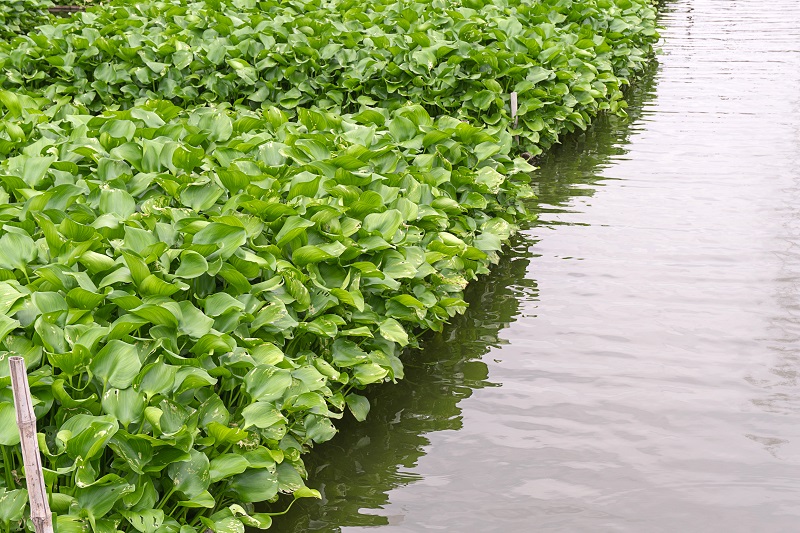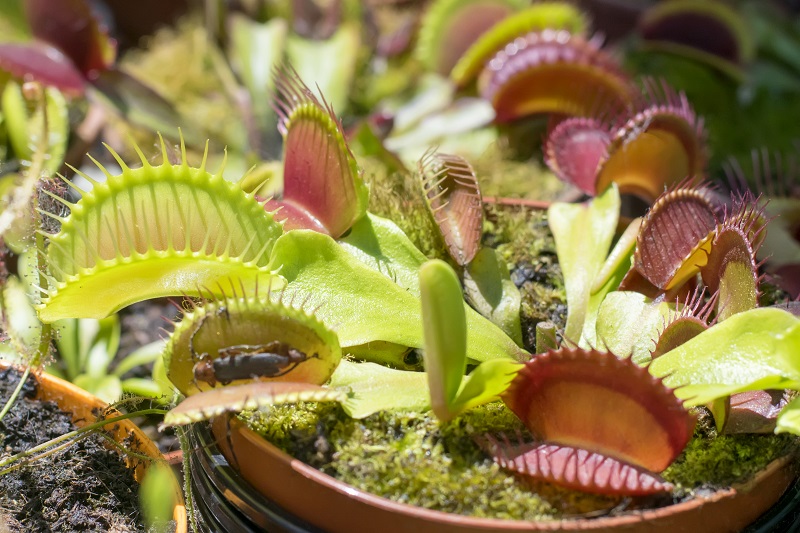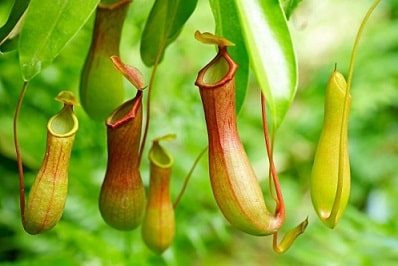Objective of the chapter: Adaptations in Plants - Class 4
You will learn:
- why different plants and animals live in different environment
- different types of plants (aquatic, terrestrial, evergreen and deciduous)
- how plants are adapted to the environment in which they live
Animals and plants can be found anywhere you go. You may have observe that plants and animals living in different kinds of places differ from each other.
For example, plants and animals found in the deserts of Rajasthan are very different from those found in the hilly areas of Kashmir.
Do you think that plants and animals found in a particular place can survive in a completely different environment? The answer is no. Why? Because plants and animals survive in a certain place as they get adaptations suitable to the condition of that place.
What Is Adaptation?
Plants and animals are living things. To survive they need food, water, air, shelter and the right kind of climate.
Plants and animals live in different places. They can be found in cold places, as well as hot, humid and dry places.
They can also be found in rivers, lakes and salty water of the ocean.
However, each place has its own challenges.
If plants and animals don't get adaptations suitable to the condition of that place they will not able to survive.
For example, fishes have gills to breathe air dissolved in water. They cannot survive outside the water because they cannot breathe outside water.
Another example is cactus. Cactus are found in hot and dry desert. They survive in desert because they have the ability to store water in their stems.
So can you now define Adaptation?
Adaptation is the process of change by which plants and animals survive better in the surrounding environment.
Because of adaptations to suit their surroundings, plants and animals living in different places look look different too. That is why you can see different kinds of plants and animals at different places.
For example, the leaves of a water hyacinth plant that lives in water are thin and big. They look very different from the leaves of a cactus plant that are like sharp needles.
Let us learn adaptations of plants below.
There are two kinds of plants - Terrestrial Plants and Aquatic Plants.
Terrestrial Plants
Plants that grow on land are called terrestrial plants.
Different types of terrestrial plants are:
- Plants in Deserts
- Plants in the Plains
- Plants in the Hills
- Plants in Marshy Places
Plants in Deserts
Do you know why the soil in deserts is dry? Due to little to no rain fall, there is very little water in the deserts. Yet plants in desert adapt themselves with the environment and survive.
The roots of desert plants are adapted to take in whatever water is available in the soil.
For example, plants like the cactus have roots that spread out just under the surface of the soil. The mesquite bush (keekar) has roots that can grow down to more than 20 metres in search of water.
You might be now thinking that with little water how desert plants survive.
Desert plants often have small leaves. The leaves of the cactus are like sharp spines. This help in preventing loss of water from the leaves. The cactus stores water in its thick stem. When there is no rain, the cactus uses the water in its stem. Instead of the leaves, the thick green stem of the cactus makes food.

Cactus with sharp spines
Plants in the Plains
Can you give some examples of plants or trees that grow in the plains? Mango, banyan and peepal tree are found in the plains. They grow better in the warmer climate of the plains.
Some plants grow better in places that are hot and wet. This type of places get heavy rainfall. Trees like teak, rubber, pepper, tea, coffee, sugarcane and tamarind grow better in this type of climate.
Some of the trees in plains are evergreen and some are deciduous.
The deciduous trees shed their leaves in the dry summer season to avoid water loss.
Plants in the Hills
Hilly areas remain very cold in the winter. Some areas also experience snowfall. Some popular hilly places in India are Kashmir, Uttarakhand, Shimla and Darjeeling.
The trees that grow in the hills have to survive the cold and snow. These trees are usually tall and straight. Instead of flowers, they have cones and are therefore called conifers. The cones have seeds in them. Conifers have needle-like leaves that are tough and can survive the cold and snow.
The 'sloping' shape of the trees makes the snow fall off them easily.
Conifers that are commonly found in the hills are pine, spruce, cedar and fir. They do not shed all their leaves at the same time. That is why they look green throughout the year. They are therefore called evergreen trees.
Some trees like oak, maple, beech and birch shed all their leaves in winter to protect themselves from cold. New leaves grow in spring. They are called deciduous trees.
Plants in Marshy Places
Water cannot drain in places that have clayey soil and plenty of water. The water collects in the soil and covers it. Mangrove trees grow in such marshy or swampy places.
The roots of mangrove trees do not get air as water covers the soil. Therefore, they have roots that grow above the soil. These roots are called breathing roots.
Aquatic Plants
Plants that grow in water are called aquatic plants. There are three types of aquatic plants - floating plants, fixed plants and underwater plants.
Floating Plants
Water lettuce, water hyacinth and duckweed are some examples of floating plants. As they float freely on top of water they are called floating plants.

Water Hyacinth
Do you know why these plants float freely on water?
The bodies of these plants are like a sponge and have empty spaces filled with air. This makes the plants light enough to float.
Fixed Plants
Plants like water lily and lotus have roots that fix the plants to the bottom of ponds and lakes. They are called fixed plants.
They have plate-like leaves that float on the surface of the water. The stomata in the leaves are on the upper side. The stems are hollow and light. This helps the leaves to float. The stems are also flexible. They bend with the flow of water and make sure that the leaves are always above water, whether the level of water rises or falls in the waterbody.

Lotus
Underwater Plants
Plants like hydrilla and tape-grass live completely under water. They are called submerged or underwater plants. They have narrow, thin leaves with no stomata. The plants breathe through their body surface. The plants absorb the carbon dioxide given out by animals living in the water. The stems are flexible and have air spaces.
Insectivorous Plants
Insectivorous means insect-eating. Plants that derive most of their nutrition from the insects, that they trap and consume are called Insectivorous plants.
The venus flytrap and pitcher plant are examples of insectivorous plants.
The venus flytrap has leaves that are folded in half (see the image given below). When an insect sits on the leaf, it quickly close the two halves of the leaves. The trapped insect is then digested by the plant.

Venus fly traps open and awaiting insects for lunch
The pitcher plant has leaves that look like containers with lids (see the image given below). There is a liquid inside the container. Insects that fall into the container are trapped and then digested.

Pitcher Plant
Fungi
The thing that grows on the slice of bread is called mould. Mould is a living thing that does not have chlorophyll and cannot make its own food. It gets its food from the substance on which it grows.

Mould on Bread
Moulds and mushrooms are examples of fungi. They get their food from plant or animal matter.
